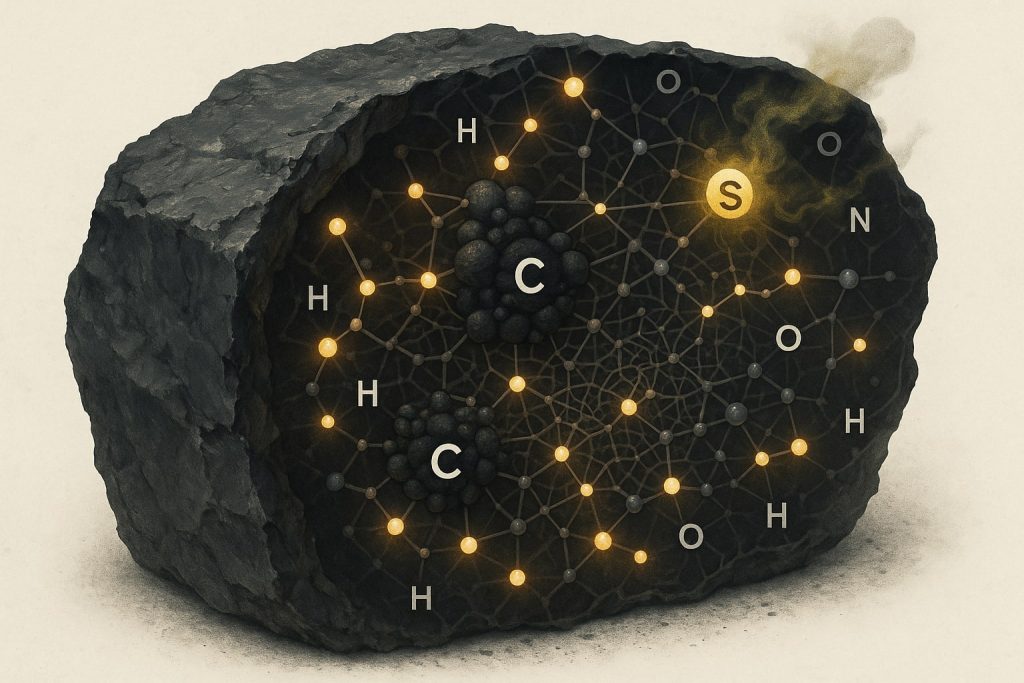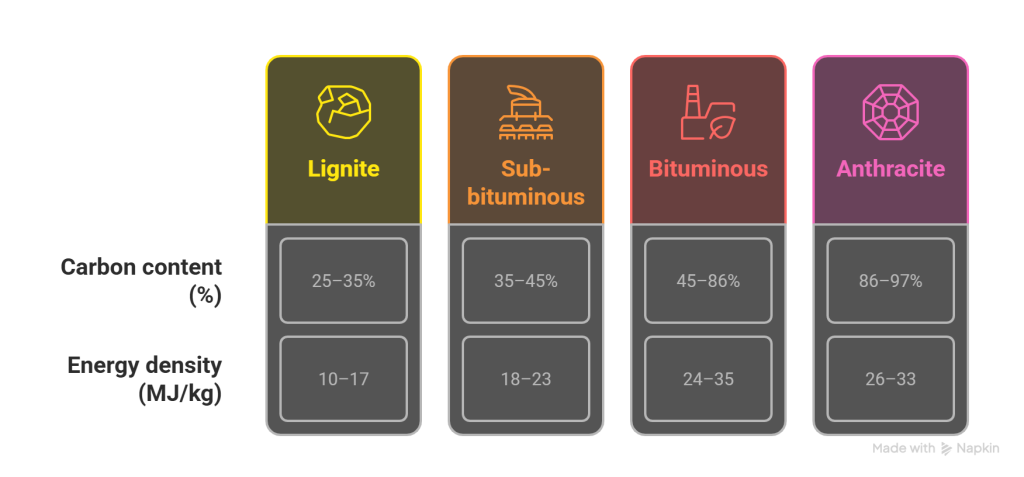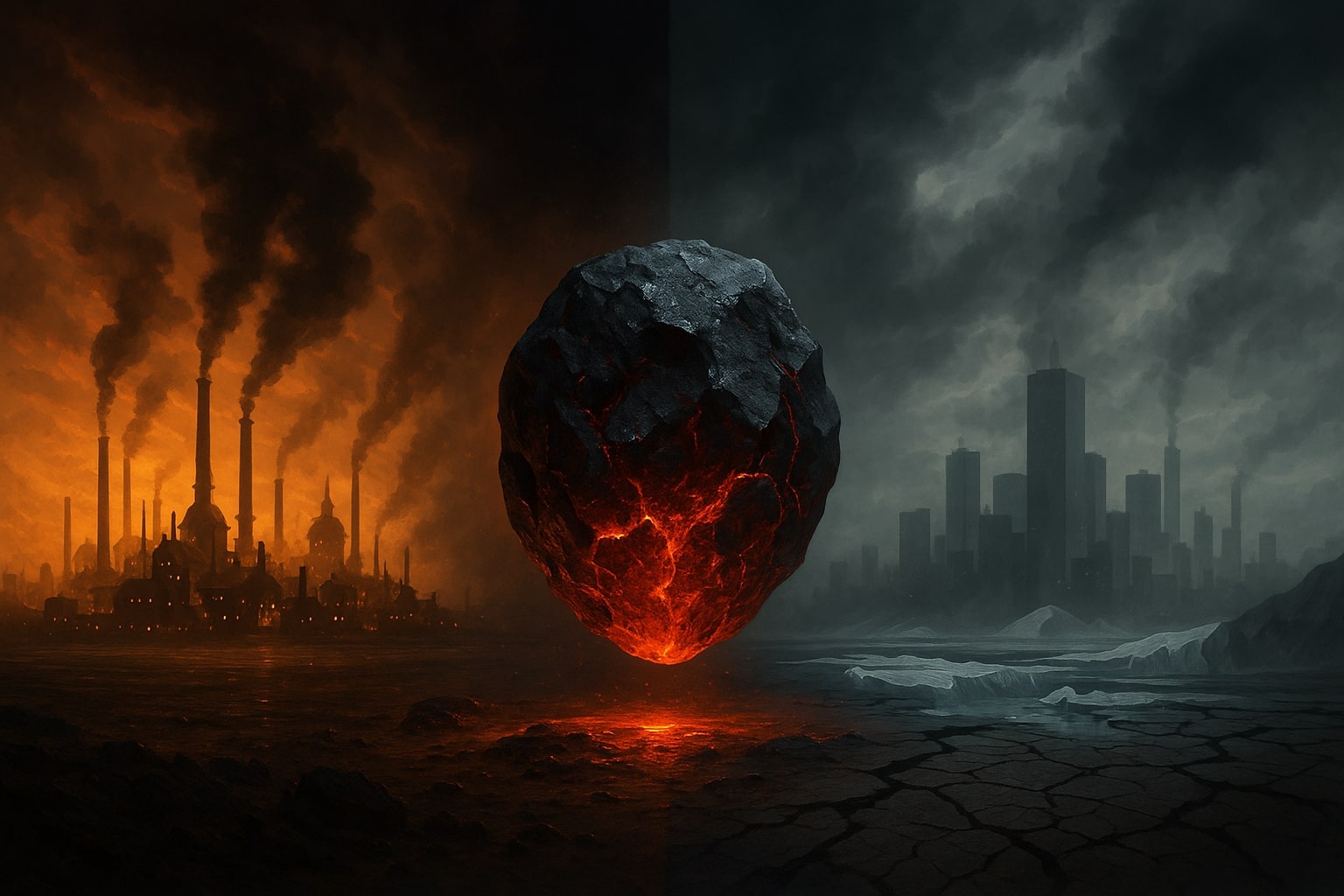Ever seen that movie about coal?
You know the one—where people discover a mysterious, powerful child and think, “This one’s special. He’ll save us.”
As he grows, his powers multiply. People build entire civilizations around him. He seems unstoppable.
Then… it all goes sideways.
The hero becomes a tyrant. The world turns on him. Rebellion brews.
No? You haven’t seen that movie? Well, maybe it wasn’t about coal.
But if coal had a biopic, that would be the plot.
Once, coal was a hero.
An engine of progress. A black rock with the power to bend steel, light cities, and fuel dreams.
It reshaped the planet. It backed the rise of modern civilization—factories, railroads, skyscrapers, all humming thanks to coal’s raw, relentless energy.
But every hero has a shadow. And coal? It was the shadow. A dark lord in disguise, cloaked in smoke, silently destroying the very world it helped build.
Welcome to 1000whats—where we dive into the stories and science behind the energy that built our world… and might just be burning it down.
Shall we dig in?
What is coal?
Coal, in a nutshell, is like the grumpy grandparent of the rock family. It’s old, it’s been under a lot of pressure, and a bit problematic at family gatherings. 😋
But beneath that crusty exterior lies the fuel that built empires.
Let’s strip away the jokes—just for a moment—and get to the core of it.
A rock with fire in its belly
Coal is a sedimentary rock. It usually shows up in shades of black or brown, and it loves to burn.
When ignited, it releases a lot of heat—more than most fuels of its kind.
That’s why it caught humanity’s eye early on. It wasn’t just flammable. It was efficient.
Coal isn’t just heavy—it’s heavy-duty.
Thanks to its high energy density, coal delivers a big punch for its weight. That made it ideal for moving, storing, and—most importantly—using to power up industries.
The chemistry of coal

Chemically, coal is mostly carbon—and that’s where the energy lives.
But it’s not alone in there. A handful of other elements ride along for the burn.
Here’s what you’ll usually find:
- Carbon (C): The powerhouse. Makes up 65–95% of coal by weight.
- Hydrogen (H): Part of complex hydrocarbons. Helps it burn clean and hot.
- Sulfur (S): Usually 1–3%. When burned, it creates sulfur dioxide—a major air pollutant.
- Oxygen (O) & Nitrogen (N): These affect how coal burns and what comes out of the chimney.
Coal doesn’t have a neat, crystalline structure like some other rocks. It’s amorphous—a tangled, chaotic mix of atoms.
Think of it as nature’s slow-cooked molecular stew: aromatic hydrocarbons layered with a mess of organic extras.
Coal is less a rock, more a fossilized chemistry set.
What are the different types of coal?
Coal comes in four main flavors. Each type has a distinct personality, energy level, and environmental footprint. You can think of them as a quirky family—some young and messy, others old and wise.
Let’s meet the crew:
🔍 Coal Types at a Glance
| Type | Carbon content (%) | Energy density (MJ/kg) | Maturity level | Typical use ⚡ | Vibe |
| Lignite | 25–35% | 10–17 | Youngest | Local power | Moist, low-energy |
| Sub-bituminous | 35–45% | 18–23 | Slightly mature | Power plants | Steadier burn |
| Bituminous | 45–86% | 24–35 | Well-developed | Energy + steel | Versatile workhorse |
| Anthracite | 86–97% | 26–33 | Most mature | High-heat uses | Cleanest, rare |
From baby lignite to old-school anthracite, each coal type has its own story—and baggage.
Why it matters
Energy density isn’t just a geeky number. It tells us how much bang we get for every lump of coal. Higher density = more energy + fewer emissions per unit.
That’s why anthracite, though rare, gets top marks for efficiency. But even the cleanest coal is still a carbon-loaded fossil. Compared to renewables, all coal types trail behind when it comes to sustainability.
Burn less coal, burn smarter coal—but best of all, burn none.

How is coal formed?
Coal isn’t just dug up—it’s cooked up, slowly, deep underground. Picture a swampy smoothie getting squashed, baked, and aged until it becomes solid, black energy. This isn’t fast food. It’s nature’s slow roast.
Let’s break down this prehistoric process with a simple, snappy table:
🔬 Coal Formation: Step-by-step breakdown
| Stage | What happens 🧪 | Visual vibe 🧠 | Timeframe ⏳ | Coal product 🛒 |
| Peat | Dead plants pile up in swamps. Waterlogged, low-oxygen goo forms. | Like compost in a swampy smoothie. | Thousands of years | Peat (not yet coal) |
| Squeeze #1 | Layers of dirt pile on. Pressure squeezes out water. | A muddy sponge getting stepped on. | Millions of years | Lignite (brown coal) |
| Bake #2 | Heat and pressure keep rising. Things get darker and denser. | A pressure cooker full of moss. | 10–50 million years | Bituminous coal |
| Super bake | Max heat + max pressure = super-dense coal. | Fossil cake, fully baked. | Over 100 million years | Anthracite (hard coal) |
It’s basically nature’s version of slow-cooked barbecue. But with ferns.
🕰 Why it takes forever
This whole process spans tens to hundreds of millions of years. That’s why coal is non-renewable—you can’t just whip up a new batch by next Tuesday. We’re burning in decades what took the planet eons to make.
Coal isn’t just old—it’s ancient. It’s older than dinosaurs.
How is coal extracted?
Coal is extracted using two main methods: surface mining and underground mining. The method depends on how deep the coal seam lies—and how much environmental or financial muscle you’re willing to flex.
🧱 Coal extraction methods compared
| Feature | Surface mining 🏞️ | Underground mining 🕳️ |
| Coal depth | Shallow (near surface) | Deep (far below ground) |
| Access | Land clearing + excavation | Shafts, tunnels, and adits |
| Techniques used | Drilling, blasting, overburden removal | Room & pillar, longwall shearers |
| Recovery rate | Up to 90% | 40–60% (varies by method) |
| Equipment | Draglines, shovels, trucks | Shearers, conveyors, ventilation systems |
| Safety risk | Lower (less collapse risk) | Higher (roof falls, gas buildup) |
| Cost | Generally cheaper | More expensive and labor-intensive |
| Environmental impact | High land disruption | Subsurface damage, sinkholes, gas risks |
| Rehabilitation | Required land restoration | Sealing shafts and stabilizing voids |
If surface mining is a bulldozer with a plan, underground mining is a chess game in a tunnel.
Modern coal mining is safer and cleaner than it used to be—but still carries major environmental and health risks. Dust, gas, runoff, and land damage are part of the bargain, regardless of method.
As the global energy shift accelerates, mining operations face rising pressure to reduce their footprint—or fade out altogether.
How was coal historically used?
Coal didn’t start off as a global power broker. It began, quite humbly, as a way to keep people warm. But over the centuries, it muscled its way into industry, warfare, and politics—becoming the dark heart of the modern world.
🔥 Coal’s first gigs: Heating and hammering
Coal’s story starts in ancient times, long before steam engines or steel mills.
In Roman Britain, people used coal to heat homes and help with metalwork. But for most of history, wood did the job just fine. That changed in medieval Europe. Forests began to vanish. Wood grew scarce—and pricey.
So folks turned to coal, especially in England. The area around Newcastle became the hotbed (pun intended) of early coal mining. It was dirty, smoky, and smelly—but it worked.
Coal didn’t charm anyone. It just got the job done.
🚂 Enter the steam engine: Coal’s big break
The Industrial Revolution hit like lightning in the 18th century, and coal was holding the wire.
At first, steam engines ran to help coal mines stay dry. Then, in a twist of fate, steam engines began to run on coal. That feedback loop—more coal, better engines, more coal—powered an explosion of machines, railways, and factories.
Coal also birthed coke—a purified, carbon-rich fuel crucial for steelmaking. With steel, we built bridges, rails, ships, and skyscrapers.
Coal didn’t just power machines. It forged the skeleton of the modern world.
🏠 Domestic bliss (and smog)
Coal didn’t stop at factories. It crept into homes, too.
Cities like London and Paris relied on it for heating, cooking, and hot water. The side effect? Massive air pollution. London’s infamous “pea-soupers”—thick, toxic fogs—were coal’s dirty fingerprints in the sky.
Coal made homes warmer, but it made the air meaner.
🌍 The politics of black gold
As nations industrialized, coal became more than just energy—it became leverage.
Countries with coal had power. Literally. Control of coal-rich regions like Germany’s Ruhr Valley could tip the balance of war. Colonizers grabbed land not just for spices or gold, but for coal seams buried beneath foreign soil.
Where coal went, empires followed.
🧊 The slow fade of a fiery giant
In the 20th century, coal’s dominance began to crack.
Oil and gas stepped in. Later, solar and wind picked up steam (ironically, without steam). Environmental movements and rising climate awareness shoved coal out of the spotlight—at least in some parts of the world.
But it never fully disappeared. In many countries, coal still keeps the lights on, especially where alternatives remain scarce or expensive.
🔚 From hero to hazard
Coal gave us industry, cities, and global reach. But it also gave us pollution, carbon emissions, and climate consequences. Its history is a masterclass in human innovation—and a cautionary tale about burning through resources without looking back.
How is coal used today?
Coal may have lost some of its glow in climate conversations, but in the real world? It’s still burning hot.
Despite decades of cleaner alternatives, coal remains a heavyweight in global energy production—especially where affordability and industrial might matter more than air quality.
Let’s break down where coal is still flexing its muscles today.
⚡ Powering the planet (still)
Coal’s biggest gig? Making electricity.
Coal-fired power plants work like giant kettles. You burn coal, make steam, spin turbines, and boom—electricity. It’s old-school, but it still gets the job done.
As of 2023, coal generates around 36% of the world’s electricity. That makes it the #1 single source of power worldwide.
We’ve sent humans to space, but we still boil water with rocks.
The process hasn’t changed much: grind coal, burn it, make steam, spin a turbine. Efficiency has improved, but the basic recipe is still 19th century.
🏭 Fueling industry
Coal isn’t just about lightbulbs. It’s also the muscle behind heavy industry.
In cement production, coal keeps kilns hot enough to melt rock into clinker—the magic dust that makes cement solid. It also shows up in:
- Paper mills 📄
- Chemical factories 🧪
- Pharmaceutical plants 💊
Anywhere you need reliable, high heat, coal is probably lurking in the background.
🔩 Forging steel
Coal plays a special role in steelmaking. Not just as fuel—but as a chemical tool.
First, coal is turned into coke (a carbon-rich rock cousin). Then coke is used in blast furnaces to extract iron from ore. The carbon monoxide from the coke acts like a bouncer—kicking the oxygen out of the iron ore and leaving pure, molten iron behind.
No coal, no coke. No coke, no steel. No steel, no cities.
📊 Coal refuses to retire
If you thought coal was fading out, think again. Here’s what the real-world data says:
Coal consumption by region (1965–2023)
Asia Pacific dominates the coal scene, even as others try to phase it out.
* Energy Institute – Statistical Review of World Energy (2024) – with major processing by Our World in Data. “Coal consumption” [dataset]. Energy Institute, “Statistical Review of World Energy” [original data]. Retrieved June 25, 2025 from https://archive.ourworldindata.org/20250624-125417/grapher/coal-consumption-by-region.html (archived on June 24, 2025).
While Europe and North America have scaled back, Asia Pacific has gone full steam ahead. In fact, the region now dominates global coal use—driven by industrial growth, population demand, and energy security concerns.
Even modern economies still lean heavily on coal. Why? Because it’s cheap, abundant, and—despite its environmental flaws—deeply embedded in the energy systems of many countries.
Coal isn’t just a relic. In much of the world, it’s still the engine.
Pros and cons of coal: A full-picture view
🌟 What’s (still) good about coal?
For all its smoke and grime, coal was once the MVP of energy. It fueled empires, lit cities, and powered industries into the modern era. And while it’s now viewed as the grumpy elder of the energy family, coal still has a few strong cards to play.
💼 Why coal still has fans
| Advantage | Description | Analogy or impact 💡 |
| Abundance & access | Coal is everywhere—from the U.S. to China to Russia. It’s the peanut butter of energy: always in the cupboard. | Keeps nations energy-independent. |
| Cost-effective | Digging up and burning coal is cheap—really cheap—compared to other fuels or shiny new renewables. | Budget-friendly for developing economies. |
| Reliable & stable | Wind stops. Sun sets. But coal? It keeps burning. It’s the 24/7 diner of energy. | Maintains base-load power. |
| Built-in infrastructure | We’ve already built the roads, plants, and pipelines. Coal has its own economy. | Transitioning is expensive. |
| Jobs & local economy | Coal puts food on the table in mining towns. It’s not just energy—it’s employment. | Boosts rural and industrial economies. |
Coal: Not clean. Not trendy. But when it comes to raw utility, it’s still punching above its weight.
The dark side of coal: Environmental impacts
And now, we flip the coin. If coal’s upsides are practical and economic, its downsides are environmental and planetary in scale. This is where the story turns from underdog hero to tragic antihero.
🏭 Pollution in the air
| Pollutant | Source from coal 🔥 | Effect on health & planet 🌫️ |
| Sulfur dioxide (SO₂) | Emitted during combustion | Acid rain, respiratory issues |
| Nitrogen oxides (NOx) | High-temp burning | Smog, asthma, heart disease |
| Particulate matter | Tiny soot particles | Lung cancer, strokes, chronic illness |
| Mercury | Trace in coal | Neurological damage, water contamination |
Each puff of coal smoke is a chemistry lesson—and a warning.
🌡️ The CO₂ Giant
| Year | CO₂ from coal (billion tons) | Share of global CO₂ emissions |
| 2022 | 15.22 | ~41.6% |
Coal is the single biggest emitter of carbon dioxide, the climate change accelerant. It’s like throwing a blanket over the planet—every hour, every day.
Coal doesn’t just warm your house. It’s warming the entire Earth.
💧 Water woes
| Water impact | What happens | Why it’s a problem 💧 |
| Dewatering | Groundwater pumped out to reach coal | Dries out aquifers and ecosystems |
| Stream diversion | Rivers rerouted for surface mining | Destroys aquatic life |
| Toxic wastewater | Cleaning coal releases chemical sludge | Pollutes rivers, lakes, and drinking sources |
Think of it like pouring bleach into a fish tank—except the tank is a river.
🏞 Land degradation
Coal mining leaves literal scars.
| Mining method | Environmental impact | Long-term damage 🌍 |
| Surface mining | Clears forests, removes topsoil | Habitat loss, erosion, aesthetic ruin |
| Underground | Causes sinkholes, damages bedrock | Disrupts ecosystems and local infrastructure |
Coal bruises the Earth. And some of those bruises may never heal.
🧨 The ash problem
| Byproduct | What’s in it | Why it’s scary ☢️ |
| Coal ash | Arsenic, lead, mercury, and more | Can leak into groundwater and soil |
| Disposal sites | Often unlined or poorly maintained | Risk of spills, contamination, health crises |
Coal ash is the party that won’t leave. Long after the power plant shuts down, the waste remains—toxic and troublesome.
A dirty dilemma
Coal is a paradox. It built our modern world but threatens the future of that world. It’s reliable, cheap, and everywhere—but also dirty, dangerous, and disruptive.
The challenge? Managing the phase-out without leaving communities in the dark—literally or economically.
Coal isn’t just a resource—it’s a responsibility.
And yet… we’re still digging.
Global coal production by country, 1900–2023
* Energy Institute – Statistical Review of World Energy (2024); The Shift Data Portal (2019) – with major processing by Our World in Data. “Coal production” [dataset]. Energy Institute, “Statistical Review of World Energy”; The Shift Data Portal, “Energy production from fossil fuels” [original data]. Retrieved June 26, 2025 from https://archive.ourworldindata.org/20250624-125417/grapher/coal-production-by-country.html (archived on June 24, 2025).
Global coal production by country, 1900–2023 – Source: Our World in Data
Despite decades of climate warnings and cleaner alternatives, coal production hit an all-time high in 2023.
China, India, and Indonesia are leading the charge—fueling industries, powering growth, and showing that coal’s exit is far from scripted.
So yes, we talk transition.
But the ground reality? We’re still deep in the coal era.
Final thoughts
Coal isn’t just a rock we burn—it’s a cornerstone of how modern society was built.
We know the science. We see the impacts. The world agrees: we need to move beyond coal. But here’s the twist—coal isn’t just an energy source. It’s woven into economies, cultures, and livelihoods. It powers cities, feeds industries, and puts bread on tables in towns that may not have another option—yet.
Phasing it out isn’t just a technical challenge. It’s a social one.
Coal may be dirty, but the path away from it isn’t clean-cut.
As we talk about transition, we must remember: we’re not just replacing a fuel—we’re untangling an entire system. And systems don’t change overnight.
❓Questions worth asking
Here are some thought-provoking questions to consider, and I’d love to hear your responses in the comments section below:
- How do we replace coal without leaving entire communities behind?
- Can renewable energy match coal’s reliability without replicating its downsides?
- What responsibilities do coal-rich nations have in the global energy transition?
- And if coal built our world—who or what will rebuild it without it?
💬 Join the conversation
Got thoughts, questions, or a coal-fueled hot take?
I’d love to hear from you. Your insights help us explore energy’s tangled past—and imagine its cleaner, fairer future.
The story of coal is still being written. Let’s make sure we like where it ends.
Until next time—stay curious, stay critical, and keep asking the hard questions.



[…] Coal is the OG of energy. It’s a dark, crumbly rock mostly made of carbon—and it’s been fueling civilizations since the steam engine wore diapers. […]
[…] this: you drag one ton of coal into a power plant. That coal contains enough energy to produce around 8,000 kilowatt-hours of […]